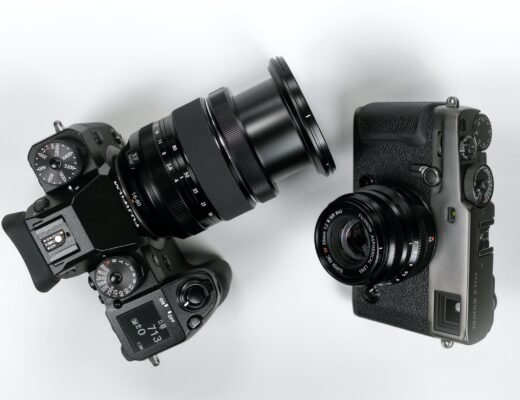The pandemic has changed our lives. What we have been used to doing is in many cases restricted, what we can do is strictly limited. As a street photographer I used to stroll the streets frequently, now I haven’t been in the Stockholm city since February, and I assume it will take till next autumn before the effects of a vaccine kicks in and everything slowly can go back to normal. What that is. It will probably take years for many things to recover, if they ever do.
50 years of photography is a hard habit to break, so when street photography became hard to do I needed something else to point my camera at. It turned out to be animals, as much a surprise to me as to anyone else.
Over the years I have used a few different SLR systems, starting with Konica, proceeding with Canon and ending up with Fujifilm. Old cameras have been retired and so the lenses, but I never sold any manual lenses, so in my drawers I had a quite a few, the longest a 200 mm Canon FD.
When I started photographing animals I had to accept the pandemic restrictions, so it had to be close to home or close to the lakeside and the nature surrounding our holiday house. No more travel is accepted. I also had an idea about gear, why not use the old lenses? Why make it easy, when I with a little more effort could make it almost impossible, sort of.
My first step was to learn how to adapt the old lenses to the Fujifilm system, which was quite easy. I bought myself two k&f adapters (Hexanon – FX and FD – FX) and started experimenting. Learning manual focusing with a Fujifilm X-T2 was easy, as long as the focal lengths was short, but when putting on the Canon FD 200 mm it got a bit harder, still doable. At least on things that sat still. But animals don’t. After a while I found that 200 mm was a bit short for bird photography, and birds was what I found most interesting, so after browsing eBay I ordered a used Canon FD 500/f8.0 mirror lens from Italy. When the 40 years old lens arrived it was in a “as new” condition, even the PASSES sticker was still there.
Using this long lens on the X-T2 was a totally new challenge. In 24×36 film format it’s equivalent to a 750 mm lens and I started to work this manual lens on freehand. To find the object in the viewfinder was hard, following the found object even harder, focus manual and expose, hopefully without shaking blur was impossible. In the beginning I threw away 99% of my attempts, at least. Nothing was sharp, by one or the other reason. I remembered why I got so in love with the short focal lengths in the film era. In those days it would have been very expensive to learn this way, this spring I was lucky it was all digital. No cost was related to this learning process and by failing and trying again it all got a little better all the time.
At our holiday house we had a swan family and I decided to follow this family over the spring and summer season. My newly required 500 mm lens became my lens of choice and this lens stayed on my X-T2 over the season. When I started pointing my lens at the swans they had newly presented 6 small swans.
Swans are very beautiful birds, but they are mean. More than once they told me to back off.
Other swans were fought with life at stake. Over the summer the kids grew up, one was lost but five survived.
My focusing skills on the X-T2 have developed over the summer, focus peaking highlight with a white border color is what I found best, sometimes using the magnification, but with birds there’s not much time to focus. For shutter speed an old rule of thumb is 1/focal length. I can under lucky circumstances use 1/250, but with 1/250 a lot of shots will be lost due to shaking blur. 1/500 or faster works better.
I would certainly have been more successful with a IBIS camera and the 100-400 Fuji zoom lens, but I love my old X-T2 with the old Canon lenses, so I have decided to struggle on with the gear I have. And looking at the cost perspective of new gear I have a lot of fun with what I have. Working with a manual lens also has it’s benefits, even if it takes a while to get to them. With manual focus I can decide where to put focus without fighting a focus system with a different idea. I can actively work with an unsharp foreground of water straw and what else that might be in the way. In the luckier moments that works fine. Another benefit with this mirror lens is that it’s short and has low weight. I can carry the camera for a long time and using the lens hand held is easier than with a more traditional 500 mm manual lens.
Below is a small number of photos from my swan encounters this season. They are all shot in Fuji standard color jpeg and post processed to black & white in Silver EFEX Pro. I struggled with the question whether I should present the photos in color or in black & white and finally decided to go for the later. I think the monochrome version tells more about the way I experienced these birds.


























